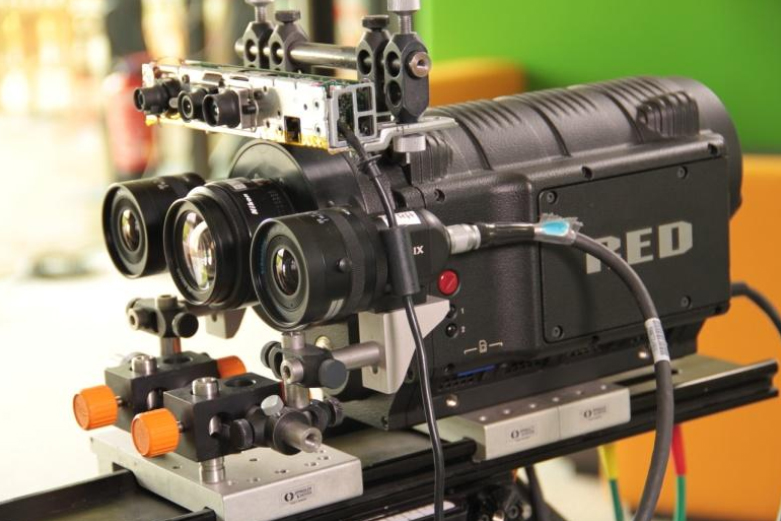Generating depth maps along with video streams is valuable for Cinema and Television production. Thanks to the improvements of depth acquisition systems, the challenge of fusion between depth sensing and disparity estimation is widely investigated in computer vision. This paper presents a new framework for generating depth maps from a rig made of a professional camera with two satellite cameras and a Kinect device. A new disparity-based calibration method is proposed so that registered Kinect depth samples become perfectly consistent with disparities estimated between rectified views. Also, a new hierarchical fusion approach is proposed for combining on the flow depth sensing and disparity estimation in order to circumvent their respective weaknesses. Depth is determined by minimizing a global energy criterion that takes into account the matching reliability and the consistency with the Kinect input. Thus generated depth maps are relevant both in uniform and textured areas, without holes due to occlusions or structured light shadows. Our GPU implementation reaches 20fps for generating quarter-pel accurate HD720p depth maps along with main view, which is close to real-time performances for video applications. The estimated depth is high quality and suitable for 3D reconstruction or virtual view synthesis.
“Fusion of Kinect depth data with trifocal disparity estimation for near real-time high quality depth maps generation“, G. Boisson, P. Kerbiriou, V. Drazic, O. Bureller, N. Sabater, A. Schubert. Proc. SPIE 9011, Stereoscopic Displays and Applications XXV, 90110J. IS&T/SPIE Electronic Imaging, 2014.

